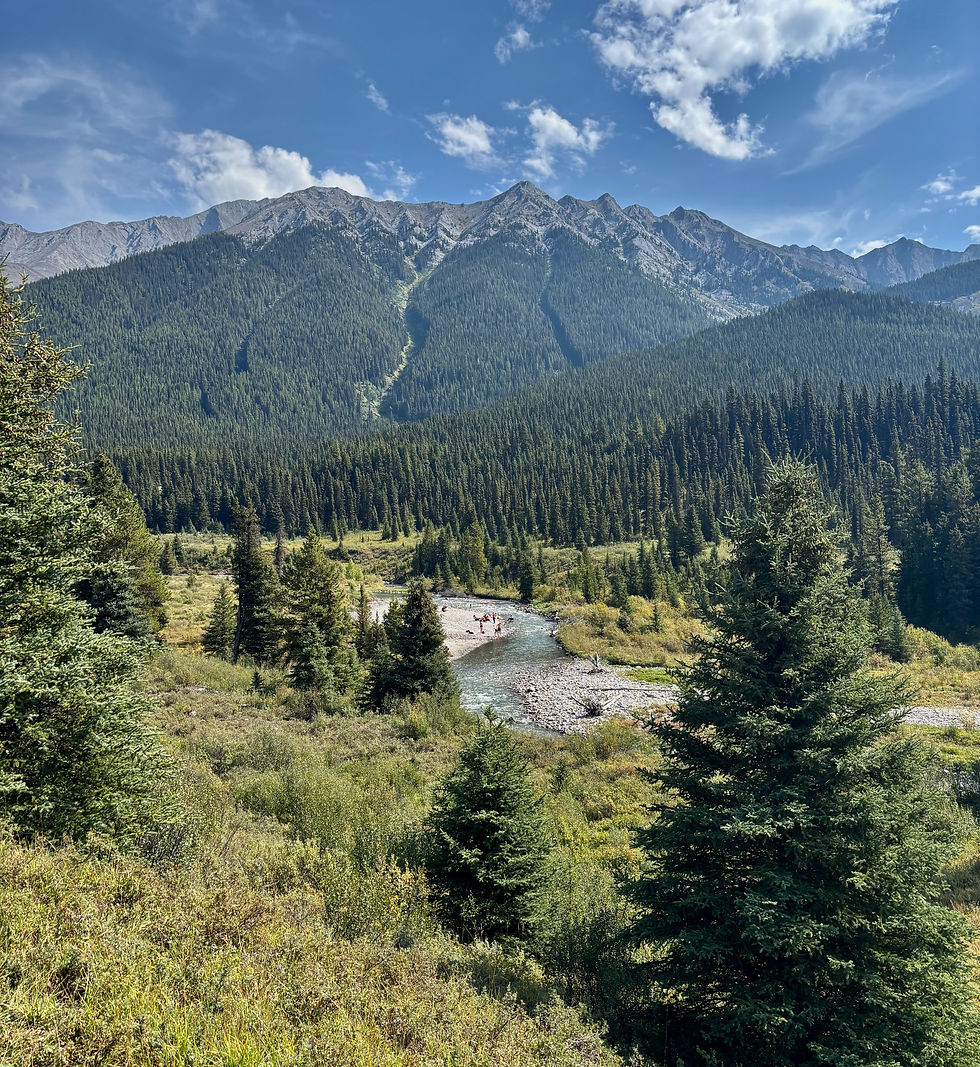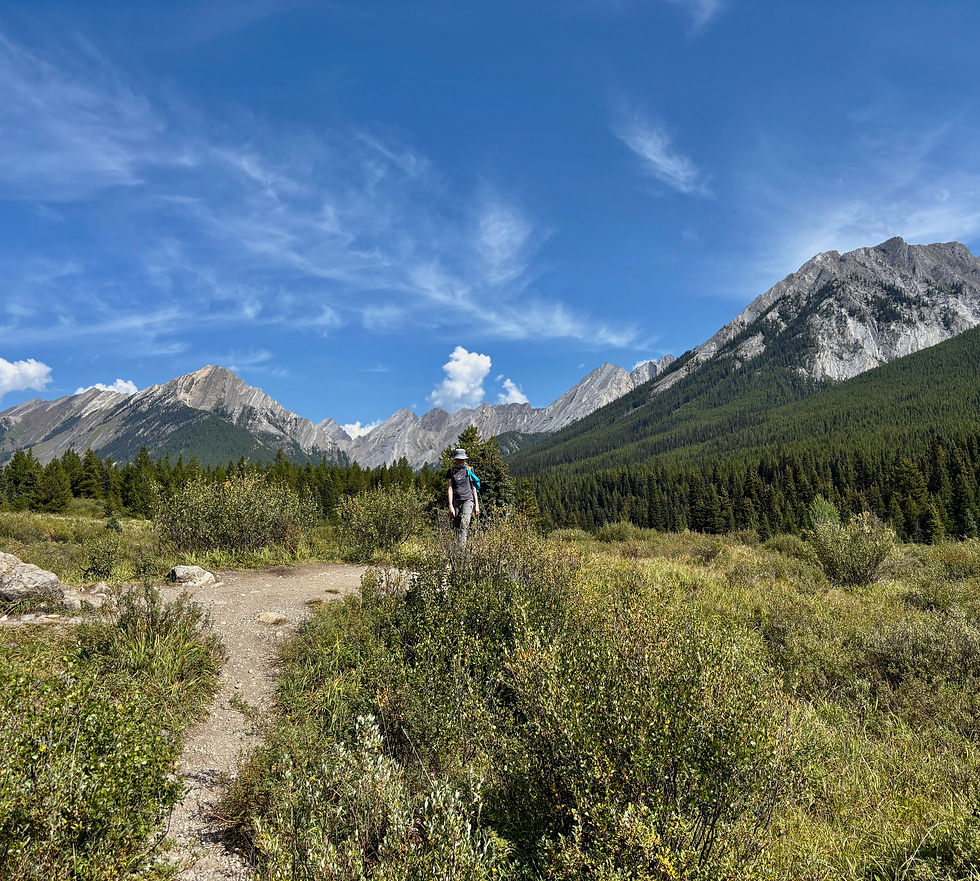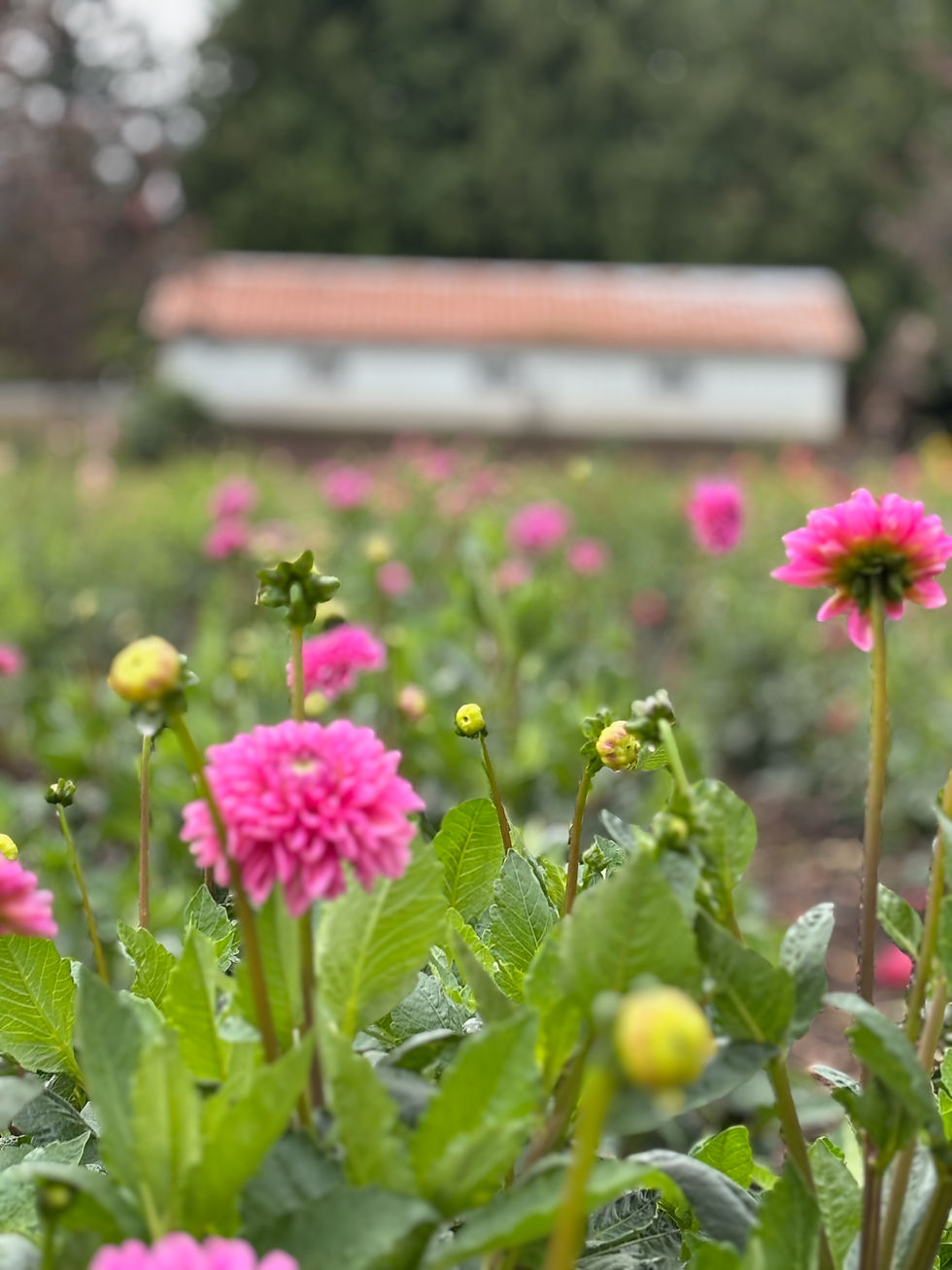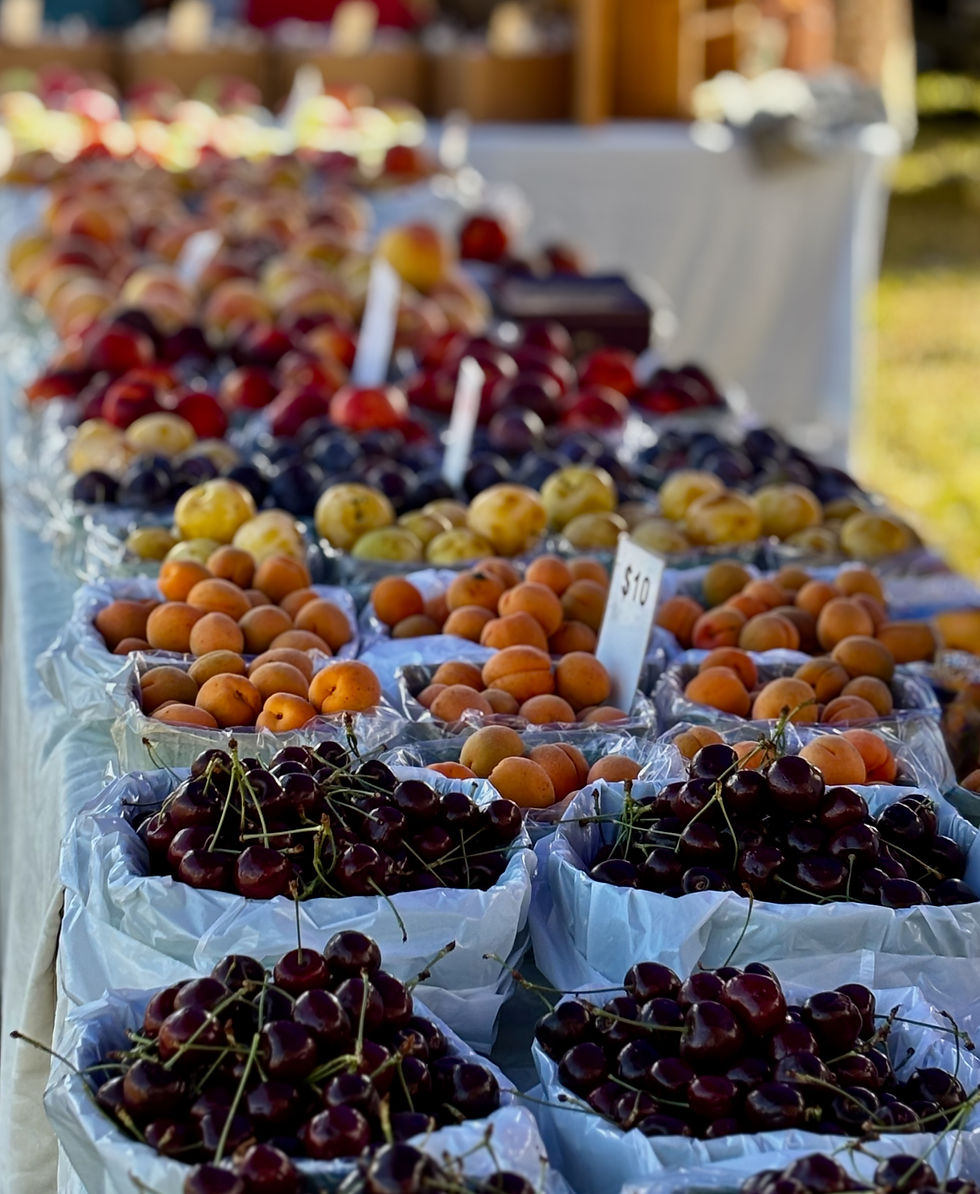- Leonora Ross

- Sep 2
- 2 min read

Johnston Canyon — A beloved name to Albertans. A favourite Canadian Rocky Mountains destination for globe-trotters.
The trail guidelines say “moderate”. For seasoned hikers, that means not too little, not too much. For the inexperienced enthusiast, it will take your breath away—in every sense.
This is no Sunset Boulevard, where tourists take selfies hoping to spot stars. The only stars on that pavement are beneath your feet. Nature makes you earn your way to the true stars: over stones, tree roots, elevation. It’s a grind.
Narrow, concrete walkways fenced off for canyon views give way to wider gravel paths as you climb. The crowd thins. You notice the seasoned operators who can anticipate what challenge lies around the bend; energetic youths—seemingly unaffected and chatting away; old-timers taking it slow to take it all in, knowing how quickly it all speeds by; couples walking single file, heads bent and faces flushed.
You breathe deeply—because air is free, and here it’s as clean as it gets. You need every bit your lungs can take in. You keep climbing, thinking: what a climb this life is. You want to conquer obstacles, face your fears, prove to yourself that you have it in you to make it.
Then the curtains open. You stand at the foot of the valley stage and understand: everything worthwhile takes effort, but the reward is bigger than you could have dreamed.




Here you come. Sit down. Linger a while. The water in your bottle tastes as sweet as the sound of the river carving its path through the canyon.
Cradled in the embrace of the mountains, there is music and stillness and remembrance of time’s rhythms—the coming and going of our spirits as they revisit themselves.
With the reward tucked under your breast, you head back, knowing the lines of the mountain’s back you must follow. Prepared for the challenge.



















